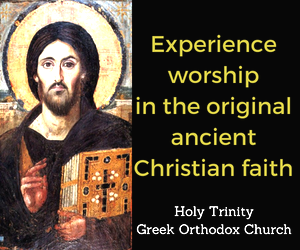Vashti: Caught in a Culture War Crossfire
Commentary by Walter Hesford
“Queen Vashti Is Not the Feminist Symbol Many Want Her to Be” states the title of a March 7 SpokaneFāVS article from the Religion News Service by Rabbi Ari Shafron. “It’s sad to see a carefully preserved Jewish historical tradition sacrificed on the altar of contemporary ism,” continues the Rabbi.
The tradition the Rabbi is drawing on is Midrash, interpretations of Hebrew scripture, especially those compiled between 400 and 1200 CE. According to Midrash, reports Rabbi Shafron, “Vashti enslaved, beat and humiliated Jewish women and forced them to work for her on the Sabbath.”
Not being familiar with this interpretation, I was surprised and dismayed by this view of Vashti. I was only familiar with the way she is portrayed in the biblical Book of Esther and to the positive way the great Black poet-activist, Frances Harper (1825-1911), interpreted her. This made me think of how conflicting interpretive traditions give rise to arguments that typify our current culture wars.
From the outset, the Book of Esther has aroused interpretive conflict. Written between the fourth and third century BCE, it was not accepted into biblical canons until the third or fourth century CE. Perhaps some saw (and see) it as fiction, not history, or perhaps because there is no mention of God in it. However, since the book establishes the festival of Purim, it has played a significant role in Jewish life.
Set in fifth century BCE Persia, the book’s story begins with the King of Persia throwing a wild party during which he orders his queen, Vashti, to come and display her beauty to his drunken friends. When Vashti refuses, the angered king asks his sages what he should do. They tell him that Vashti’s refusal threatens the status of all men and thus he should punish her lest all wives in the kingdom think they can defy their husbands. So Vashti is robbed of her royal position (Esther, chapter 1).
When the king decides to find a new queen, Esther, the cousin of Mordechai, an elder in the Jewish diasporic community, gradually wins the heart of the king. Following Mordechai’s advice, she does not reveal her Jewish identity (chapter 2). However, when Haman, a prominent official, foments a pogrom against the Jews, urging that they all be hanged, Esther ”comes out” as a Jew and successfully pleads for the lives of her people. Haman and his allies are hanged instead (chapters 3-8).
One can see from the biblical story why Esther is celebrated, but there is no ground given in the Bible for casting Vashti as a villain. So, it is no wonder that someone like Frances Harper, well-versed in the Bible, identifies with her as she stands up to tyranny.
A militant abolitionist and advocate for women’s rights, Harper dared to speak in public for liberation and equality at a time when many did not approve of women doing so, as Henry Louis Gates Jr. and Nellie Y. McKay, editors of the 1997 “Norton Anthology of African-American Literature,” point out. In their selection of her works, Gates and McKay place “Vashti” (1857) right after ‘The Slave Mother” (1854), a moving depiction of a mother trying in vain to protect her son from being torn from her and sold on the auction block.
Harper’s Vashti refuses to be displayed as if she were a slave on an auction block. Harper’s 17-stanza poem follows the biblical account of this refusal.
Here are the last two stanzas, which describe Vashti’s response to her dethronement:
“She heard again the King’s command,
Vashti by Frances Harper
And left her high estate,
Strong in her earnest womanhood,
She calmly met her fate,
And left the palace of the King,
Proud of her spotless name,
A woman who could bend to grief,
But would not bow to shame.”
Harper’s Vashti represents strong, proud and virtuous womanhood. As seen above, Rabbi Shafron’s Vashti is far from virtuous. Thus, he criticizes contemporary feminists who champion her, as Harper did long ago.
The Rabbi notes that feminists sometimes elevate Vashti at the expense of Esther, whom they see as too docile. Perhaps the Midrash interpretive tradition the Rabbi draws on felt the need to demean Vashti to elevate Esther.
I respect the value of this interpretive tradition for those who treasure it, but still I wonder why we can’t admire both Esther and Vashti; indeed, my brother tells me that the Midrash of Eretz Israel does so.
We should acknowledge that the sources of diverging interpretations may well be laden with biases. I fear, though, that given our current culture wars this is unlikely to happen and that a character like Vashti will be caught in the crossfire. And we will be, too.






